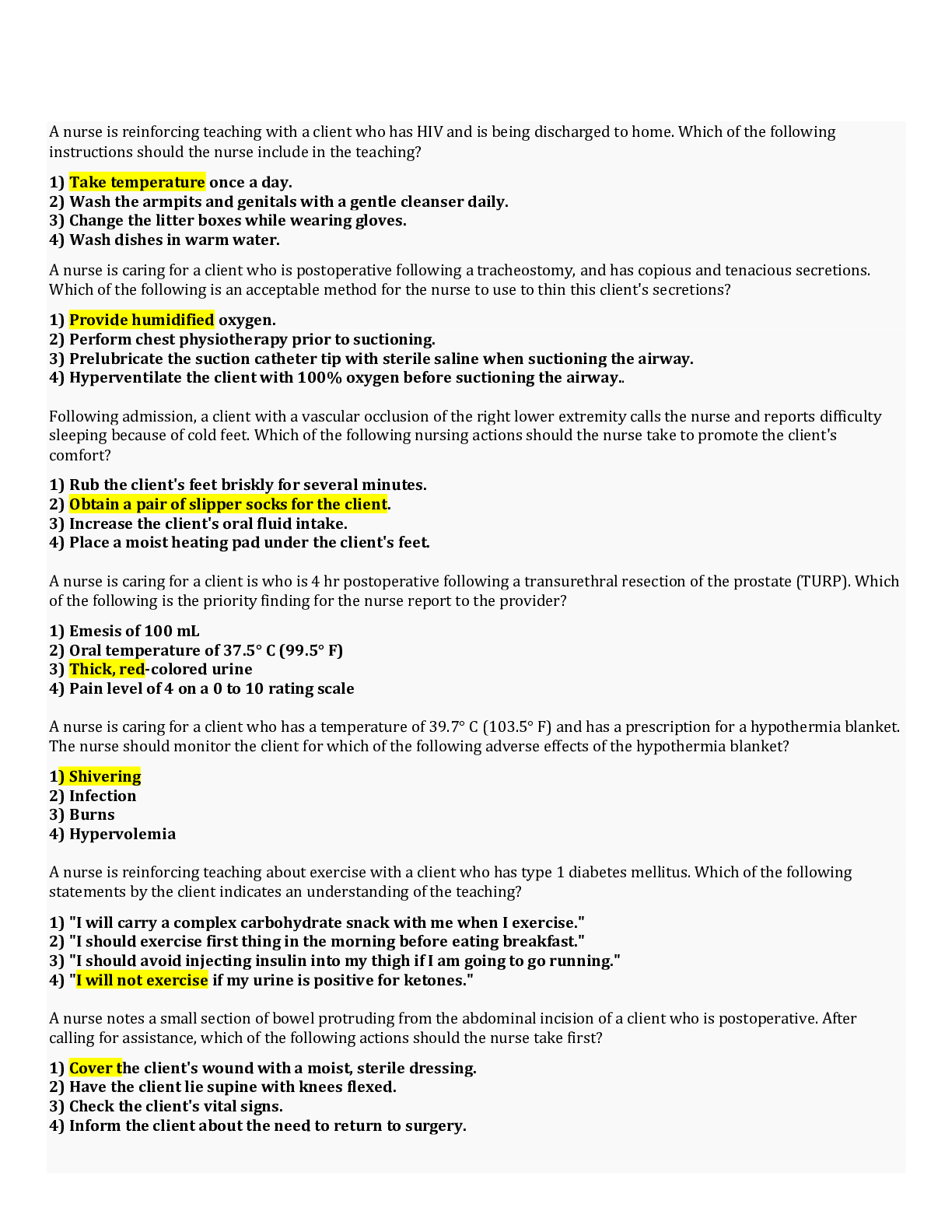*NURSING > STUDY GUIDE > UWOLRD NCLEX RN COMPREHENSIVE STUDY GUIDE, ALL CHAPTERS COMBINED (All)
UWOLRD NCLEX RN COMPREHENSIVE STUDY GUIDE, ALL CHAPTERS COMBINED
Document Content and Description Below
UWOLRD NCLEX RN COMPREHENSIVE STUDY GUIDE, ALL CHAPTERS COMBINED>FUNDAMENTALS OF NURSING BASIC CARE AND COMFORT DYSPHAGIA DIET • Clients with dysphagia are at risk for aspiration and aspirati... on pneumonia. Dietary modifications and swallowing rehabilitation measures can reduce the risk of aspiration in clients who can tolerate oral feedings. Specific techniques include the following: o Modification of food consistency (pureed, mechanically altered, soft) o Thickened liquids o Having the client sit upright at a 90-degree angle o Placing food on the stronger side of the mouth to aid in bolus formation o Tilting the neck slightly to assist with laryngeal elevation and closure of the epiglottis • Some clients who have suffered a cerebrovascular accident (CVA) are also left with visual impairment such as hemianopsia; in this condition, a person sees only a portion of the visual field from each eye. A client with a rightsided CVA may have left-sided hemianopsia. Having the client turn the head during a meal will help the client see everything on the plate • Adding milk to mashed potatoes will alter the consistency; if the consistency is too thin, the client will be at increased risk of aspiration. • Using a straw for drinking liquids might cause increased swallowing difficulty and choking. Controlling liquid intake through a straw is more difficult than drinking straight from a cup or glass. BREAST PROSTHESIS A breast prosthesis is an artificial appliance that is fitted to the external chest wall or inserted into a female client's undergarments to simulate previous symmetry after a mastectomy or breast trauma. This is an option for clients who are not interested in, or are not candidates for, breast reconstruction surgery. This appliance assists in the promotion of well-being, body image, and sexuality. • When evaluating the use of a breast prosthesis, nurses should assess the client for body image disturbance using open-ended questions and therapeutic communication NON-THERAPEUTIC COMMUNICATION TECHNIQUES THERAPEUTIC COMMUNICATION • Clients from many cultures will be more responsive if the interpreter is the same gender, especially when the condition is highly personal or sensitive • The nurse should maintain good eye contact when communicating with the client. The interpreter should translate the client's words literally. • Communication is with the client, not the interpreter. The nurse should use basic English rather than medical terms, speak slowly, and pause after 1-2 sentences to allow for translation Providing simple instructions about upcoming actions in the order they will occur will be easier for the client to understand. For example, the nurse can indicate that there will be surgery and then a follow-up visit as opposed to, "You'll follow up with the health care provider after your procedure" The nurse should obtain feedback to be certain that the client understands. This feedback should extend beyond nodding as some people nod to indicate that they are listening or nod in agreement to "save face" even though they do not understand. It is better to use a tactic such as having the client repeat back information (which is then translated into English). • Using a fee-based agency or language line is preferred if an appropriate bilingual employee is not available. The client may not want the friend/relative to know about this personal situation, or the person may not be able to adequately translate medical concepts and/or understand client rights. BENEFICENCE • Beneficence is the ethical principle of doing good. It involves helping to meet the client's (including the family) emotional needs through understanding. This can involve withholding information at times. • Stating that the client is critically ill and is being cared for meets the ethical principle of veracity (telling the truth) but also avoids overwhelming the family before they travel to the hospital. The nurse does not want the family to be too distressed to process the situation and arrive safely. PRINCIPLES OF CULTURALLY COMPETENT CARE • All clients have cultural influences that can affect their beliefs and concerns about causes of medical conditions and expectations for treatment. • The nurse should have clients express what caused their medical illnesses or problems to gain knowledge of their beliefs and understandings about the conditions; this is fundamental to developing a culturally sensitive and appropriate teaching and care plan. • Culturally competent care requires the nurse to recognize that the client's interpretation of an illness is more significant than the nurse's knowledge of the illness. • Clients' beliefs about health and disease may be complex and tightly rooted in centuries-old traditions. • Some clients welcome scientific explanations about their conditions, whereas others ignore a nurse's teaching that does not align with their personal perspectives. • The nurse must never assume that a client knows (or does not know) about a subject; accurate assessment about knowledge and beliefs is necessary. • Culturally competent nursing care involves recognizing certain cultural and religious beliefs. A health-related belief of Jehovah's Witnesses is that transfusions containing blood in any form are not acceptable. • Witnesses do not accept transfusions of whole blood or any of its 4 major components (ie, red cells, white cells, platelets, and plasma • Shock prevention is a major concern in the setting of blood loss and can be accomplished with the use of non-blood volume expanders such as saline, lactated Ringer's, dextran, and hetastarch. These can be administered safely to clients who refuse blood products • Recombinant human erythropoietin (eg, epoetin alfa) and IV iron are accepted by most Jehovah's Witnesses. These medications stimulate the bone marrow to produce more red blood cells, resulting in increased hematocrit and hemoglobin levels • To provide culturally competent care, it is important for the nurse to realize that in many Arab cultures, a man is not allowed to be alone with a woman other than his wife. It may also be inappropriate for a female health care worker to physically care for him; however, in some instances, direct physical care from the opposite sex is allowed if a third party is present. • Eye contact varies greatly among cultural groups. Some cultures (eg, Arab, Asian, Native American) view eye contact as a sign of disrespect or aggressiveness. This could be a concern with this client, but it is not as high a priority as respecting the client's cultural beliefs of not being alone in the same room with a member of the opposite sex. • Some cultures (eg, Native American, Asian) are comfortable with silence and see it as a sign of respect, privacy, or respect for elders. • In some Asian and Hispanic cultures, the head is thought to be the basis of one's strength or soul, and touching a person's head is considered disrespectful. • The culturally competent nurse is aware that some alternative medicine practices of nondominant cultures in North America can present with dermatologic findings. • Markings that appear to be human bites would require further follow-up as these are not common in alternative medicine. • Although nurses should be aware of various cultural practices, any marks consistent with child abuse (eg, bite marks, cigarette burns, bruises in various stages of healing) should be reported to the appropriate authorities. • Garlic application involves placing crushed garlic directly on the skin. It is thought to heal infections but can cause contact dermatitis and burns on the wrists. This is appropriate to include in a culturally competent care in-service. [Show More]
Last updated: 1 year ago
Preview 1 out of 86 pages
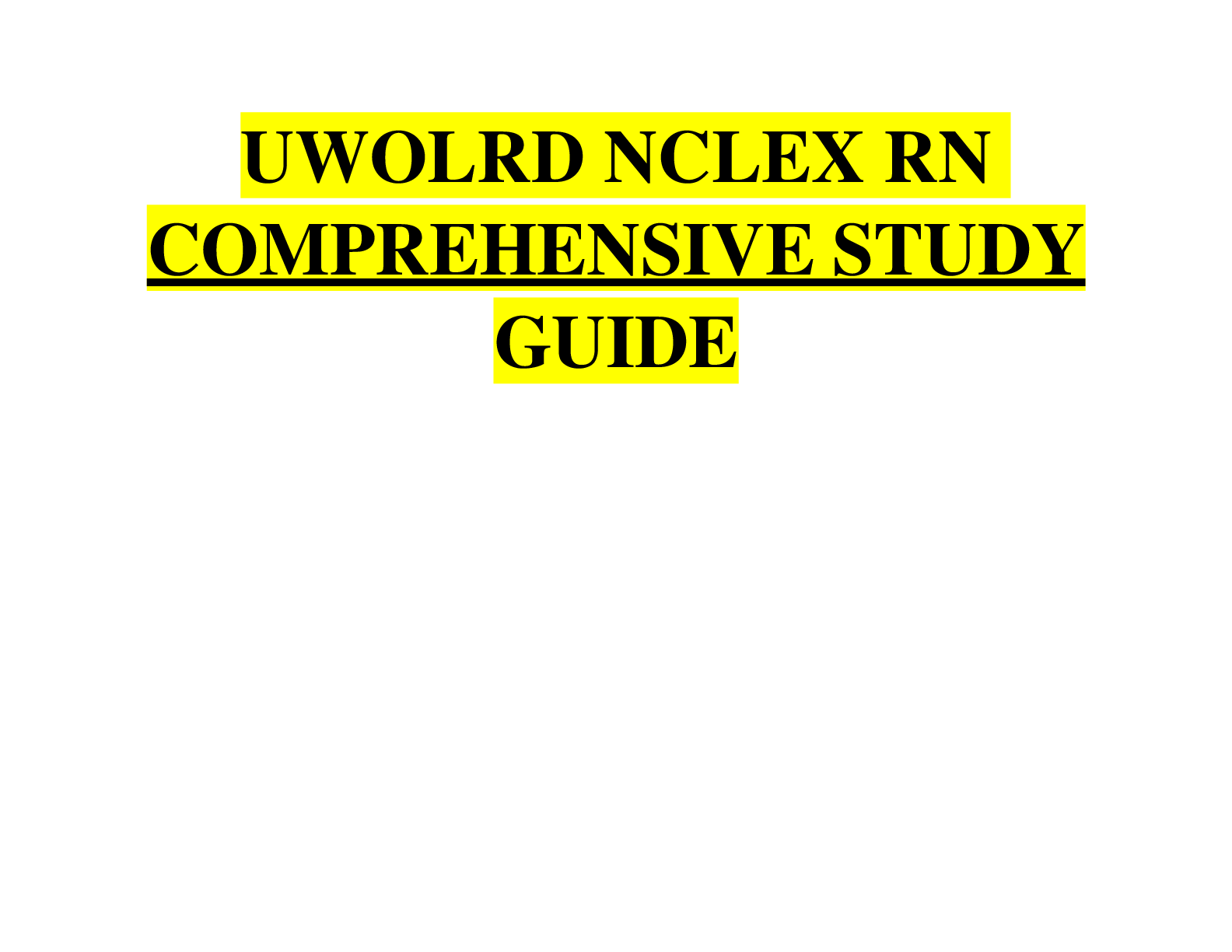
Reviews( 0 )
Document information
Connected school, study & course
About the document
Uploaded On
Apr 16, 2021
Number of pages
86
Written in
Additional information
This document has been written for:
Uploaded
Apr 16, 2021
Downloads
0
Views
51

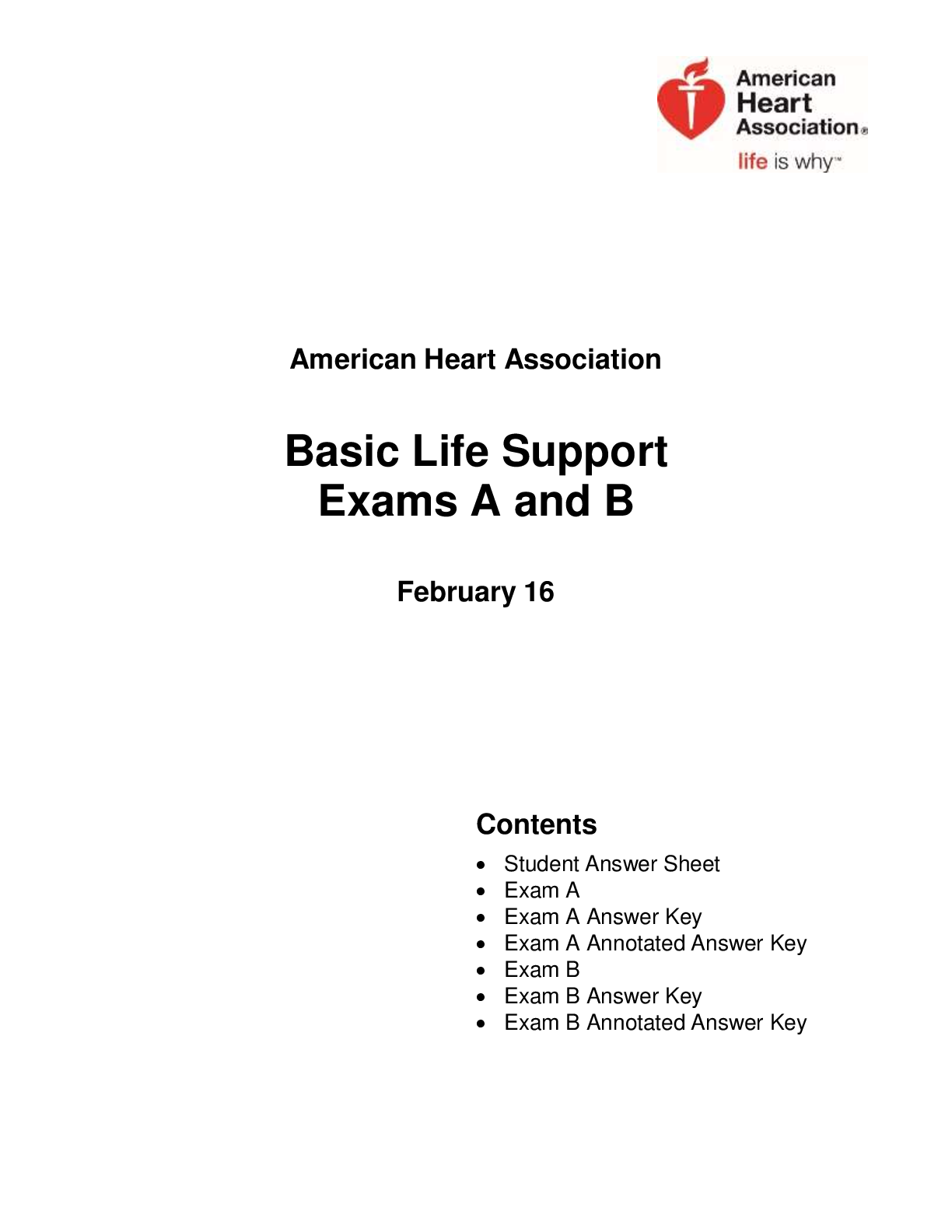


.png)

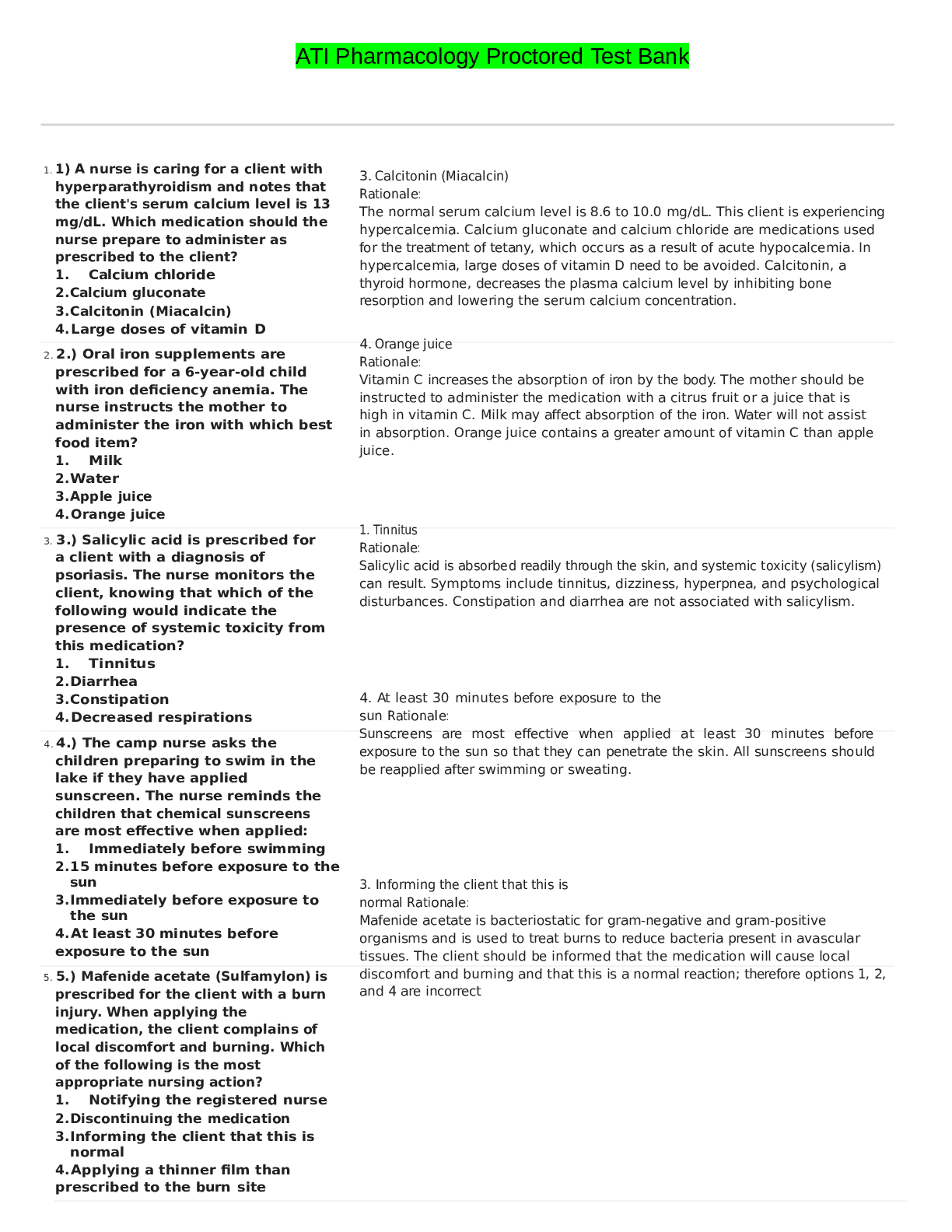
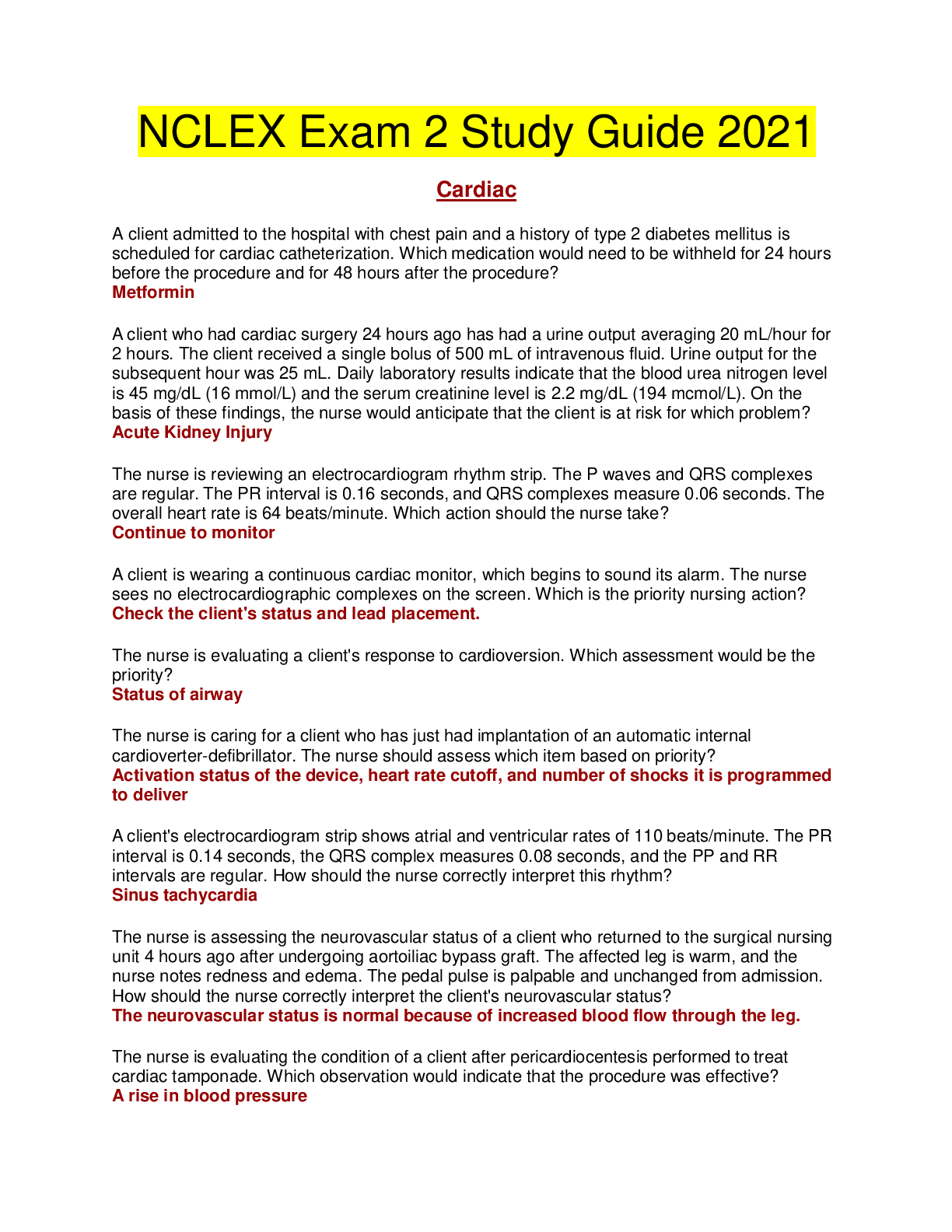



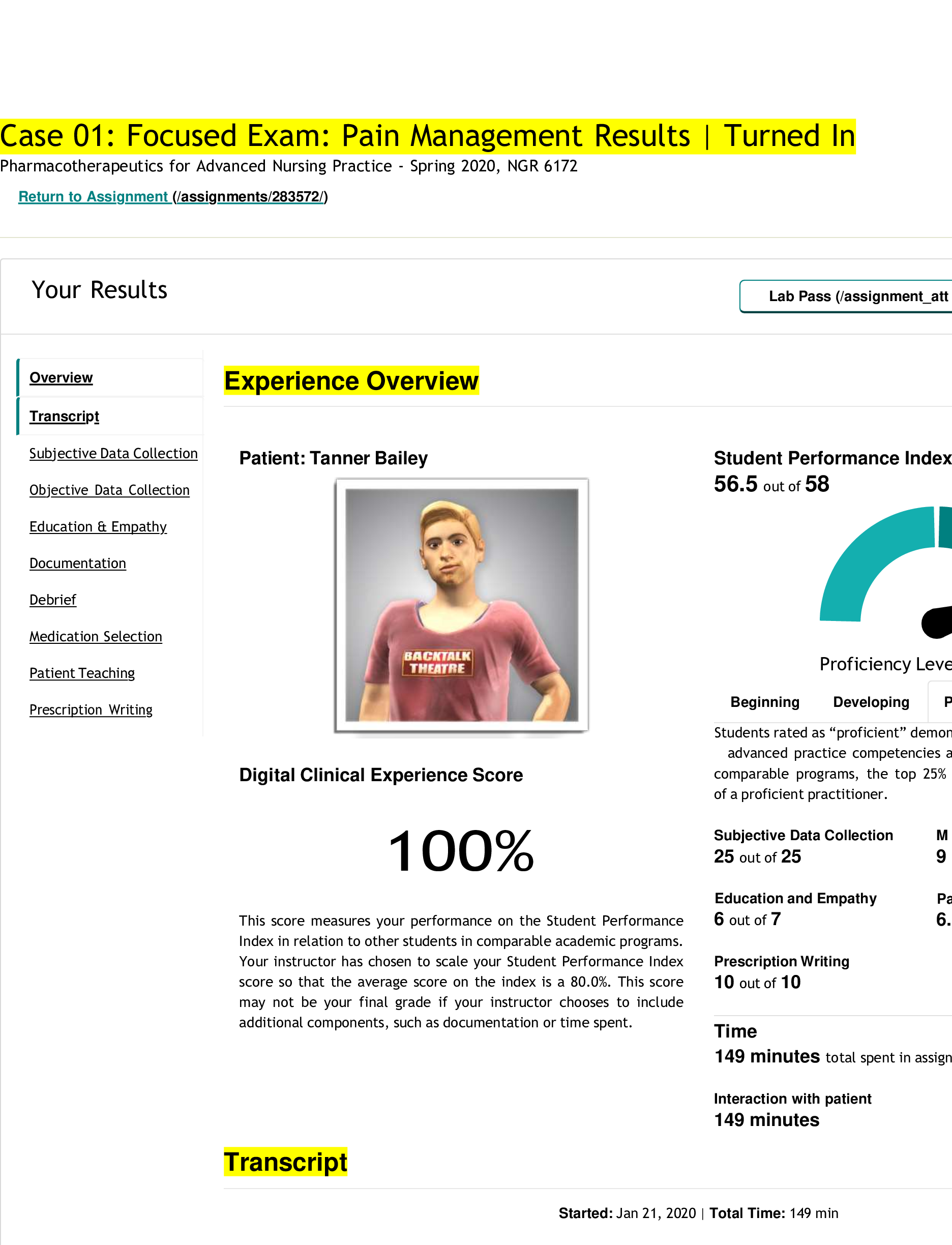
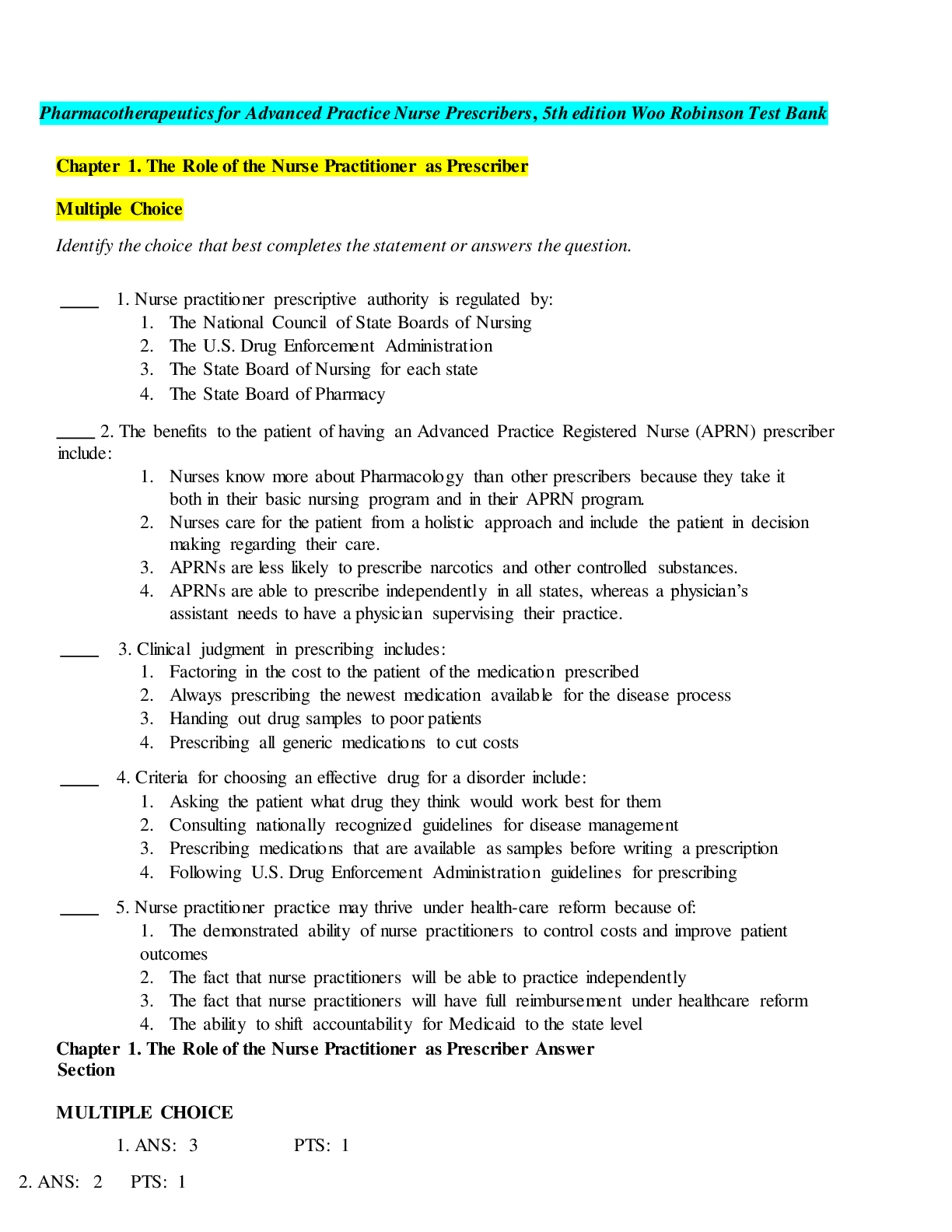
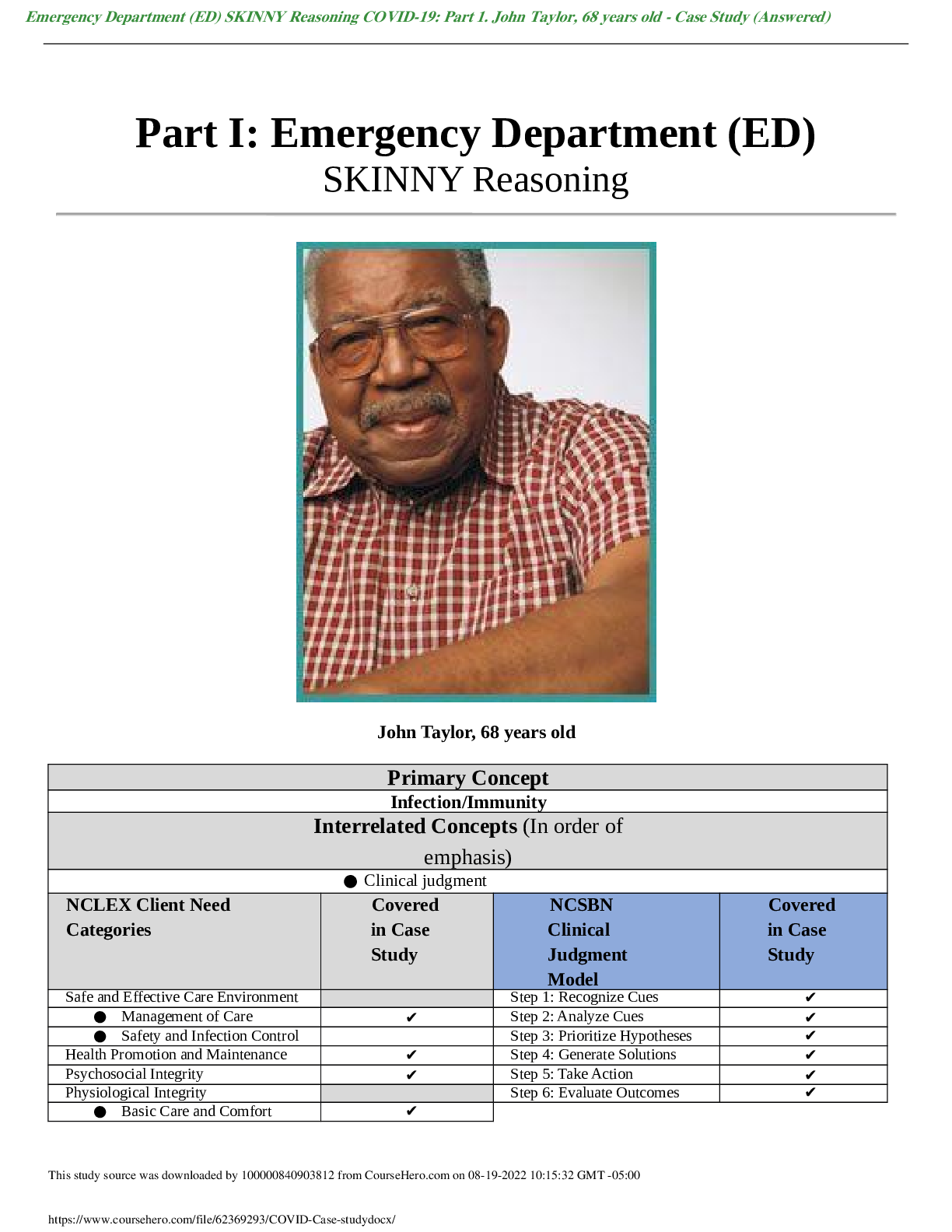









.png)









